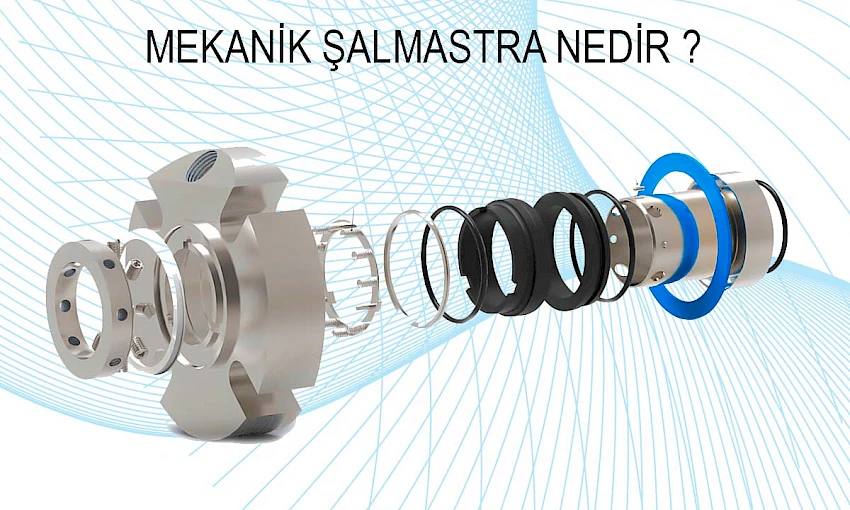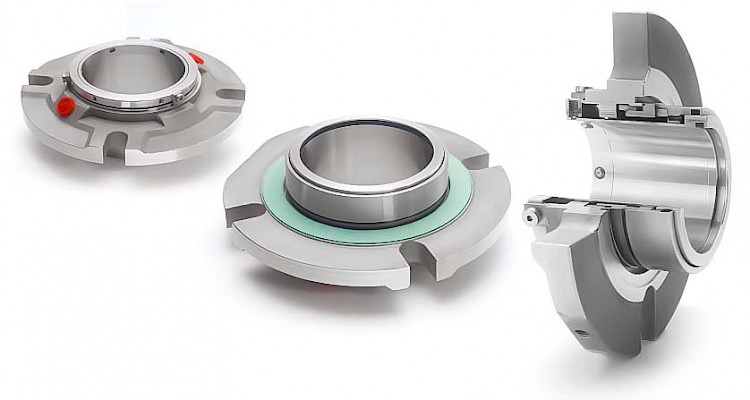
How Do Mechanical Seal Systems Work?
The working principle of a mechanical seal is based on the contact between the friction surfaces of two main sealing elements placed between a rotating shaft and a stationary housing. These elements apply pressure to each other thanks to a spring used. The micro-gaps that occur during rotation are a gap 75 times thinner than a strand of hair, so you can visualise them in your mind. Thanks to the flexible and pressurised structure of the seal, these gaps close. This structure ensures sealing, keeping the substance inside the system under control and minimising energy loss.
What are the types of mechanical seals?
There are various mechanical seals available depending on the area of use, environmental conditions and material structure.
Metal-Cased Seal: Preferred in heavy industry due to its high temperature and pressure resistance.
Spring-Loaded Seal: Features a single or multiple spring system, providing flexibility and leak-proofing in rotary movements.
Cartridge-Type Seal: A type of seal supplied as a single piece, ready for installation. Offers ease of installation and maintenance advantages.
Double Mechanical Seal: Features a double sealing surface. Preferred in high-pressure and critical environments.
Single Mechanical Seal: Simple in design, featuring a single sealing surface. Commonly used in low-pressure systems.

Mechanical Seal Properties
| Seal Type — Temperature Resistance — Pressure Range — Application |
| Single: Temperature can reach 80 degrees, used in clean water systems between 0 and 10 bar. |
| Double: Can reach temperatures of 150 degrees, can operate between 0 and 25 bar, and is frequently used in chemical process pumps. |
| Cartridge: Can withstand temperatures up to 200 degrees, operates between 0 and 30 bar, used in industrial boilers. |
| Spring-loaded: Can withstand temperatures up to 120 degrees, can operate between 0 and 15 bar, and is frequently used in rotating shaft systems. |
| Metal Cased: Can reach temperatures of 250 degrees, can operate between 0-50 bar, and is frequently used in high-pressure industrial equipment. |
Seal Materials and Their Poreperties
- Graphite (Carbon) Seal
- Properties
- Has self-lubricating characteristics.
- Resistant to heat and chemicals.
- Exhibits high wear resistance.
- PTFE (Teflon) Seal
- Properties
- Chemically inert and compatible with most acids and bases.
- Low-friction and non-stick surface.
- Operates effectively over a wide temperature range.
- Metal Seal
- Properties
- Resistant to high pressure and temperature.
-
Long service life due to its hard and durable structure.
Mechanical seals are critical components that ensure the safe and efficient operation of chemical reactor mixers. The selection of the correct seal material and type must be made according to the operating conditions. Proper seal usage prevents leakage and extends the service life of the pump.
Writer:
Professor Doctor Mustafa Yaşar
Industrial Design Engineer





































